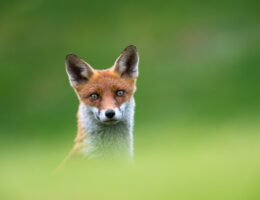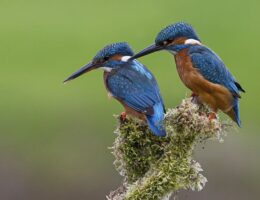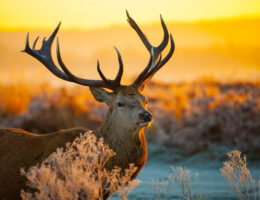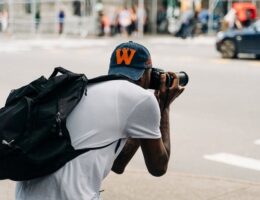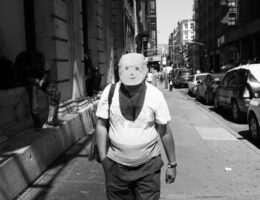IRAN ART EXHIBITION: TAKE NOTICE OF SOME TIPS FROM AN EXPERT IN ARCHITECTURAL PHOTOGRAPHY
Advice to improve your architectural photography.
From shots of historical buildings to humble abodes, architectural photography covers photos that primarily showcase the interior or exterior of manmade structures. With subjects that are static and easily accessible, architectural photography is a natural beginning for a lot of photographers. “I think it’s a good place to start,” says photographer Nick Ulivieri. “The architecture’s already there, and you can just go outside and shoot whatever you want to shoot.” You don’t need a studio or elaborate light setup, at least not for exterior shots, to capture great photos of buildings. You don’t need to direct models. Your subject is still, freeing you up to study how the setting may affect every shot. Lighting, weather, and the potential angles you can shoot from are the variables that you need to consider as you begin building your architectural photography skills.
Exploring interior architecture photography.
You give up a lot of control when shooting the outside of a building. “The challenge with creating high-quality architectural images is knowing when and when not to shoot a certain structure,” says Ulivieri. “You’re at the mercy of the building’s design, the location, the shadows, and the weather.” In some forms of photography, you can control the environment to get the right shot, but with most architectural subjects it’s all about your ability to adapt.
Dealing with time of day and weather conditions.
“There are two main shots. A really nice daytime photo where you’ve got a blue sky and maybe some clouds,” says Ulivieri. “And then there’s blue hour.”
Blue hour is the time just after sunset when the sky takes on a pink, blue, or purple tinge, and photos of buildings at that time can help highlight external lighting features while lighting up exterior aspects like facades. Plus, photos shot at blue hour may allow internal lights to give the building an inner glow. The bright lights, deep colors, and dramatic contrasts of blue hour photos make these shots a popular choice for the large marquee images that often dominate websites, brochures, and other assets.
IRAN ART EXHIBITION: While some architecture photography is artistic, many clients want to showcase buildings or real estate — for commercial purposes — on a clear day or just after sunset. For these daylight shots, avoid direct sunlight. Taking photos when the sun is overhead will result in harsh contrasts and deep shadows. “Exterior is mainly about time of day,” says photographer Kenton Waltz. “Shooting at magic hour is great, because you don’t get harsh exposure differences.” Magic hour, also known as golden hour, is about an hour after dawn or before sunset. It’s known for providing a lot of soft, warm light.
Different buildings often look better during different weather conditions and at different times of day. “If you’re doing a more brutalist structure where contrast is part of the design, you might want to shoot at high noon when you get more shadows,” Waltz says. Likewise, metal and concrete industrial structures can look especially imposing when slick with rain, old Victorian mansions can look haunting beneath an overcast sky. And if you want to emphasize the height of a skyscraper, you can choose to shoot it when the top of the building is shrouded in clouds. It’s all about seeking out the right setting for each building.
Finding the right vantage point.
Street-level photos may not provide the best angle for your subject. “If you’re shooting a skyscraper or a building taller than 30 stories, find a vantage point,” says Waltz. To avoid distortions in perspective, stand on something that’s about halfway up the height of what you’re trying to photograph. If you look up at a structure, its lines will appear to converge due to perspective. However, if you’re directly across from a building, there’s no perspective change. For especially tall buildings the right vantage point might not be anywhere on the ground or a nearby structure. “Sometimes a drone is the best option if you can’t get where you need to be,” says Waltz. If you have the budget, cranes and helicopters are an option, as well.
Exploring exterior architecture photography.
The first thing any interior photographer needs to do is prepare the space. Most homes, offices, or other lived-in buildings won’t be set up to look their best in a photo. They’ll be set up for daily use. A good interior photographer knows how to fix that. “It’s a running gag with interior photographers,” says Waltz, “but our biggest job is moving furniture.”
IRAN ART EXHIBITION: Interior photographers should also be prepared to bust out the cleaning supplies. “Everybody’s got toothpaste on the mirror,” says Waltz. “It doesn’t matter who you are, or how expensive your house is, there’s toothpaste on the mirror. Be ready to clean the space.”
Once the place is prepared, get low. Shooting from a lower height can make a shot more about what’s actually in the room. “I like to shoot from kid height,” says Ulivieri. “My camera is maybe two-and-a-half to three feet off the ground. If you shoot lower it helps you focus on the details of the space.” That lower vantage point allows chairs, sofas, and tables to take prominence in the shot. A little higher up, and you’re mostly focusing on walls and doors.

IRAN ART EXHIBITION: Weather can still be a factor with interior photography. If you’re shooting a property on a dark or rainy day, you will have to be prepared to deal with whatever natural light (or lack thereof) is coming into the space. “You can work on composition regardless of how well or poorly lit a space may be,” says Ulivieri. High-end equipment like off-camera flashes can also correct for poor natural lighting, but good composition will go a long way.
Getting the right equipment for architectural photography.
It doesn’t take much to get into architectural photography, but you’ll want more than just a DSLR camera to get truly great shots.
• A tripod is essential for both interior and exterior architectural photography of all sorts. A photographer will often take several shots of a subject at the same angle and height, and then composite the best parts of the different photos together. “A lot of times if I’m shooting interiors, it’s very rare that I have a final photo that is one single frame,” says Ulivieri. Be ready to take a lot of photos and stitch them together in post-processing.
• Wide-angle lenses are especially useful for interior shots. Without a wide-angle lens, rooms can often appear to be smaller than they really are. Good interior photography shows the potential of the space, and a wide-angle lens takes it all in.
• Tilt-shift lenses can be very useful when taking exterior shots. If you’re photographing tall buildings from a distance, the vertical lines of tall buildings can appear to fall away or forward. A tilt-shift lens allows you to maintain straight lines and perspective. If you don’t have a tilt-shift lens, it’s also possible to adjust perspective in Photoshop.
• Drones are sometimes useful for those exterior shots that don’t offer a convenient vantage point, or you need to photograph out-of-the way architectural design elements at different angles.
IRAN ART EXHIBITION: Even with all the right equipment, the most important thing for any architecture photographer is patience. “You cannot rush these things,” says Waltz. “We might do an entire day and walk away with ten photos.” Be willing to work with the environment, weather, and the building itself. It can be a slow process, but one that makes amazing images of everything from residential real estate to the biggest structures on the skyline.

